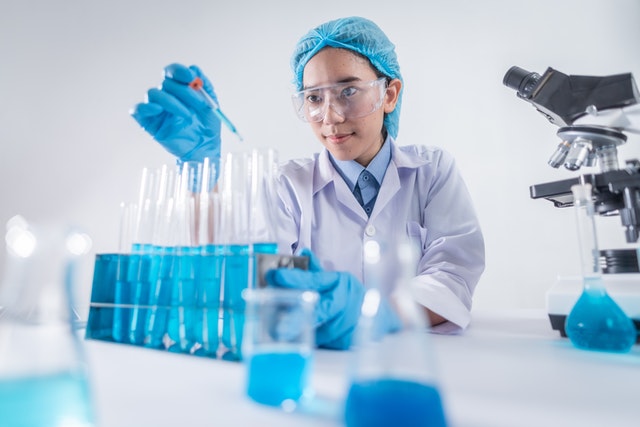An accurate pipette is critical in laboratory research because of its role in the accurate measurement and transfer of liquids.
The ability to replicate and accurately measure fluid transfer affects the outcome of the research experiment.
Measurement Accuracy
Scientific research depends on precise measurements. A laboratory that cannot accurately measure the transfer of fluids will not produce reliable results. The ability to transfer very small amounts of liquid is crucial to a laboratory’s success. The transfers have to be extremely accurate and repeatable. Every test tube must receive exactly the same amount of test fluid in every instance. Any variance will invalidate the result.
Many labs have turned to liquid handlers to automate this process.
Pipetting Process
Pipetting can be done with or without machine assistance
Manual pipetting is appropriate in small applications. It requires the steady hand of an experienced technician. Manual pipetting is straightforward. The best practice is to have the same technician perform all pipetting actions. Introducing multiple technicians introduces the risk of technician-to-technician variability.
You can employ semi-automatic machines to scale up production and introduce standardization of sample size. A technician only has to transfer a hand probe from one receptacle to another.
Automated liquid handlers can perform the entire process. New machines have been introduced with cameras which help cut down on common lab errors, such as a “missing tube”.
Automated liquid handlers are ideal for processes requiring hundreds of samples at once. They ensure consistent processing without deviation.
Sample Integrity
Accurate pipetting transfers small sample volumes without any loss. This helps preserve the integrity of biological samples in fields like genomics and drug discovery.
All phases of clinical testing are susceptible to error. To ensure accurate laboratory results, you must enforce strict fluid handling procedures and protocols.
Improving Pipette Accuracy
It behoves all lab technicians to be accurate with a pipette. There are learnable techniques to improve one’s technique.
Use the best pipette for the job. Experts consider positive displacement pipettes with low volume ranges the best. Positive displacement technology offers better accuracy and precision when compared to air-cushion pipettes.
Use the right technique. You can dispense most liquids using a straightforward technique. The reverse pipetting technique disperses liquids like ethanol and glycerol more effectively.
Maintenance
To keep your pipettes and liquid handling systems in top condition is it important to follow proper maintenance procedures.
Clean the external surfaces of your pipettes with a mild detergent and water. Avoid getting water or other liquids inside the pipettes.
Calibrate your pipettes at regular intervals to ensure they maintain their accuracy.
If your pipettes use disposable tips, be sure to replace them after each use to avoid cross-contamination.
Store your pipettes in an upright position in a designated rack to prevent damage.
Proper pipetting procedures will help your laboratory maintain its accreditation.
Liquid handling seems simple on the surface. The truth is, you must master a highly complex process for a laboratory to succeed and produce accurate, repeatable results.


